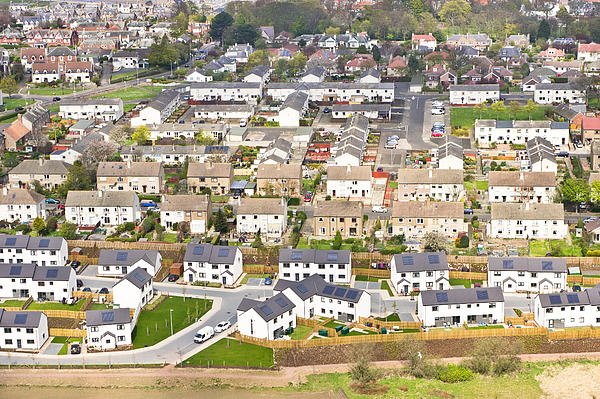The Housing Puzzle: Crafting Solutions for All Americans
In the intricate tapestry of American life, a secure and affordable home is a vital piece of the puzzle. However, for many, this piece remains elusive due to the escalating cost of housing. In this article, we will explore the complex puzzle of housing in America and the solutions that can ensure housing for all. Drawing on the wisdom of industry expert Bob Sulentic, we’ll unveil comprehensive strategies to craft a brighter future where every American has a place to call home.
The Housing Puzzle
Before we piece together solutions, it’s imperative to understand the multifaceted housing puzzle in America. This challenge encompasses skyrocketing home prices, stagnant wages, and a scarcity of affordable rental options.
Key Statistics:
| Statistic | Data |
|---|---|
| Median Home Price (2023) | $350,000 |
| Minimum Wage (Federal) | $7.25/hour |
| Annual Income Needed for Median Home | $72,000 |
These statistics lay bare the complexity of the issue. In 2023, to afford a median-priced home, an individual would need an annual income of $72,000—far surpassing the federal minimum wage. This income inequality underscores the urgency of addressing the housing puzzle.
Government-Led Initiatives
Government initiatives play a pivotal role in solving the housing puzzle. Federal and state governments have the power to implement policies and programs that open doors to housing opportunities for all Americans.
Low-Income Housing Tax Credits
The Low-Income Housing Tax Credit program incentivizes private developers to construct affordable housing units. By offering tax credits to developers, this initiative stimulates the construction of housing options for low-income individuals and families.
Section 8 Housing Vouchers
Section 8 Housing Vouchers provide essential assistance to low-income families, helping them cover their rental payments. Recipients of these vouchers contribute a portion of their income towards rent, making housing more affordable and stable.
Public Housing Programs
Public housing programs offer subsidized housing for individuals and families in need. These programs ensure that those with limited financial resources have access to safe and affordable housing options.
While government initiatives are vital, solving the housing puzzle necessitates a comprehensive approach.
Architectural Innovation
Innovative architectural approaches can significantly reduce housing costs. Sustainable designs, efficient space utilization, and alternative construction methods can make homes more affordable. Concepts like tiny homes and modular construction are gaining prominence for their cost-effectiveness and environmental benefits.
Tiny Homes
Tiny homes have emerged as a practical solution to affordability challenges. These compact, efficient dwellings offer several benefits:
- Lower Construction Costs: Smaller footprints require less material and labor during construction, reducing overall costs.
- Energy Efficiency: Tiny homes are easier to heat and cool, resulting in lower utility bills for occupants.
- Minimal Maintenance: With less square footage, there is less to maintain, lightening the burden on homeowners.
Image by: https://www.irishtimes.com/
Community Land Trusts
Community land trusts are a powerful piece of the housing puzzle. By acquiring land and holding it in trust, communities can ensure that housing remains affordable for generations.
Advantages of Community Land Trusts
- Long-Term Affordability: Housing remains affordable as land appreciates in value.
- Local Control: Communities dictate the use of the land, aligning it with their needs and values.
- Stable Communities: Community land trusts promote community development and cohesion.
Corporate Collaboration
Corporate partnerships can be a key piece in solving the housing puzzle. Companies can invest in affordable housing initiatives, leveraging their resources and expertise to create a meaningful impact.
Corporate Initiatives
- Employee Housing Programs: Some companies provide housing assistance to employees, recognizing the importance of stable housing in their well-being.
- Impact Investing: Corporations can invest in affordable housing projects, generating returns while making a positive social impact.
- Skills Training Programs: Initiatives that prepare individuals for careers in construction and related fields help address workforce shortages in the housing sector.
Community Engagement
Community involvement is a critical piece in the housing puzzle’s completion. Engaging with local residents ensures that housing solutions are tailored to their specific needs and align with the character of the neighborhood.
Benefits of Community Engagement
- Tailored Solutions: Housing designs and plans reflect community preferences, ensuring they are both functional and culturally appropriate.
- Social Cohesion: Community engagement fosters a sense of ownership and belonging among residents.
- Transparency and Trust: It builds trust between developers and residents, fostering a more collaborative and positive atmosphere.
Conclusion
Solving the housing puzzle is a complex but achievable endeavor. It requires assembling government initiatives, architectural innovation, community engagement, and corporate partnerships into a coherent whole. By putting these pieces together, we can create a future where housing is not a puzzle to solve but a fundamental right for all Americans.
The housing puzzle may be intricate, but with the right strategies and the collective effort of individuals, communities, and organizations, we can craft a future where every American has a place they can proudly call home











